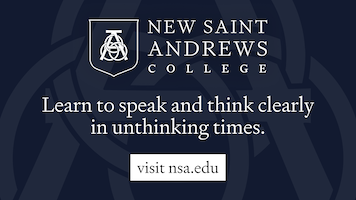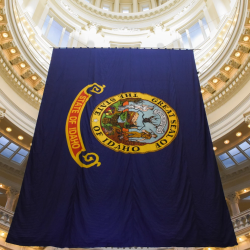By Bob Shillingstad
Alex Newman has written several books about the effects of the National Education Association, and by affiliation, the Idaho Education Association (IEA). His description states:
Through the deliberate dumbing down and conditioning of children in government schools, the forces of evil have radicalized youth to hate God, family and their country.
The IEA is part of the very effective education lobbying force that not only directs the legislature but also elects local school board members with the support of the mainstream media. We need to be aware of what is happening nationally but the real battle is for control of our school boards and local governments. Yes, home schooling, vouchers and charter schools are available in Idaho but we still have to pay for the support of our government schools.
Do you notice that local school boards are not at all curious why they have lost students? Parents have voted with their feet and pulled their children out of the schools. The Coeur d’Alene district lost 10% of the enrollment in the fall of 2020, more than 15% since then, and they expect to lose more students this fall. Why would that be? Is it that the test scores are abysmal? Is it a lousy curriculum that rejects American success and celebrates Critical Race Theory and DEI instead of individual achievement? Wouldn’t being a little bit curious be appropriate?
A recent article in the Coeur d’Alene Press said:
Trustees previously expressed interest in exploring a four-day school week for cost savings. At Monday’s meeting, Superintendent Shon Hocker offered another option: a four-day hybrid school year, which would provide a savings of roughly $450,000. “That’s a big enough ticket item that I think it warrants a school conversation,” Hocker said.This would gain an entire Monday of professional development for staff at least once a month, Hocker said, which is important as the district continues to focus on its strategic plan and professional learning communities.: Enrollment is down 462 students this year and is expected to decrease at least 300 more students next year.
Coeur d’Alene Press, February 6, 2024
It’s time for a reality check.
Take a look at two telling statistics in Idaho. First, reading and math proficiency for Idaho 8th graders on the National Assessment of Educational Progress (NAEP) were just 32% and 28%, in 2003. Nineteen years later, those same tests yielded just 32% and 32% proficiency — near zero progress. The raw numbers are startling. Any “choice” beyond the public schools requires parents to pay twice: once for taxes and a second time for private tuition. That’s not freedom, that’s not true choice, it’s a scam set up to protect the public education complex. Sadly, children — and their futures — are the victims.
The Coeur d’Alene school district is not alone in failing to lead. They had their hands full when trying to establish a dress code for students. The students weighed in saying they would dress any way they wanted and the teachers chimed in by saying they couldn’t and wouldn’t enforce a dress code. This district has its hands full with a dress code and their best option for plummeting test scores and dropping enrollment is to go to a four day week of education. How is that for a solution?
The fight for sanity and common sense in our elections is going to start at the local level. There are many great teachers who have been called to teach children but are trapped by a union (Idaho Education Association) with which they have nothing in common. Their values are contrary to the values that the union espouses. On June 27, 2018, the Supreme Court decided in an epic 5-4 decision that mandatory dues as a condition of public employment violated First Amendment rights to free speech and freedom of association. Idaho law currently requires school districts to engage in collective bargaining with a teachers union if a majority of district educators select union representation. How about a fair election involving the teachers in every district?
Of the 117 traditional public-school districts in Idaho, according to the Freedom Foundation in Seattle, approximately 83 currently negotiate with a teachers union. Of those 83 districts, at least 52 deduct union dues from educators’ paychecks. Over the course of a year, these districts collect about $4.4 million in dues from over 5,000 teachers, about $1.1 million of which is forwarded to the NEA headquarters in Washington, D.C. and used to advance its political advocacy. The total cost to taxpayers of school districts’ dues collection for teachers unions could run tens of thousands of dollars. At least 51 school district teachers union contracts include release time provisions requiring taxpayers to foot some or all of the bill for teachers’ time spent out of the classroom while attending to union business during working hours. The total cost to taxpayers could easily exceed half-a-million dollars per year, equivalent to about half-a-dozen teachers working full-time for the union at taxpayers’ expense.
Let’s take a look at what is in the labor agreements of some local districts. Here is language in the Coeur d’Alene district in their labor agreement that is enforceable in a court of law:
Section 4. CEA President Released Time
Beginning with the 2002/2004 school year, the CEA president or designee shall be released the equivalency of two day a week to conduct CEA business. The cost of the first 38 days shall be paid 100% by the district. Any days beyond that will be paid by the Association.
Remember, the “Association” and the CEA (Coeur d’Alene Education Association) are the union. As you can see, the district has been paying teachers up to 38 days a year to take care of union business for the last twenty years. Never mind about teachers taking care of business in the classroom and wondering about raising performance. If you think the school board is running the district, take a look at the entire contract.
The Post Falls district note only provides 36 days of leave for the union, but an additional one day per month so the union president can “attend to PFEA business”. What business could he have? According to the labor agreement between the district and the union:
The District Administration Office will process payroll dues deduction for the unified dues of the PFEA, the Idaho Education Association and the National Education Association.
Isn’t that great? The district collects union dues so the president of the union isn’t bothered by that on his or her other 36 days of paid leave.
These are just two examples from local school districts but you can find this type of language throughout Idaho and the nation. When you read about a “financial crunch” with the local school district, read through the labor agreement with your neighbors and come up with some cost cutting suggestions. The union is not a friend of students, parents or education, rather they see themselves as “agents of change” by being the power brokers in the school district.
Here are some suggestions to advocate today by concerned taxpayers:
- Demand an election to be sure the union represents a majority of the teachers in the district
- Support a voucher type system similar to Arizona or South Dakota that empowers parents to choose the education for their children
- Hold the school boards of the government run schools accountable that they retain the management rights to run the schools as they see fit (the union has the right to advocate for pay and benefits but that is all in the agreement)
- All negotiations should be public and the labor agreement with the union presented to the public and not hidden.
The taxpayers deserve no less.
Bob Shillingstad has a background in education and retired as a partner in an international financial services firm. He has been married for more than sixty years and has four children and platoons of grandchildren














One Comment
Comments are closed.